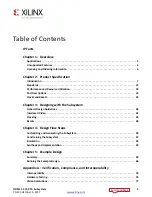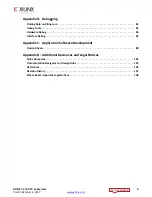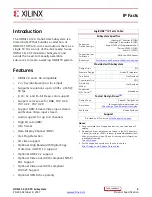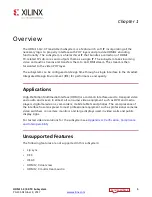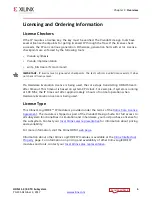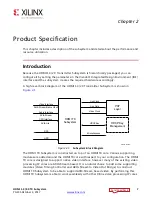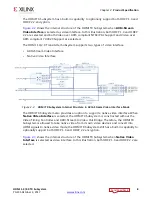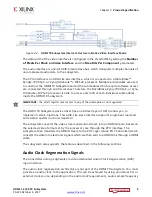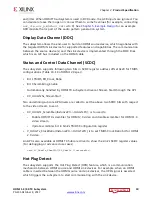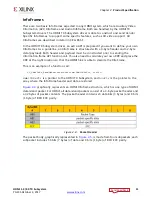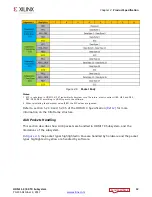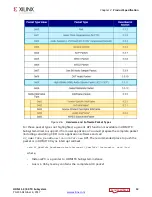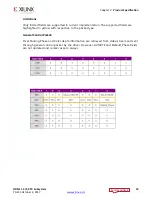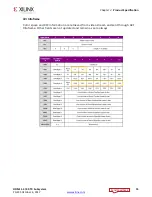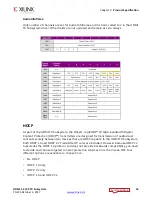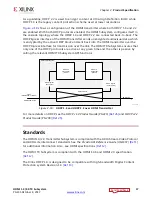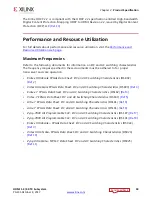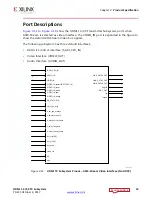
HDMI 1.4/2.0 TX Subsystem
4
PG235 October 4, 2017
Product Specification
Introduction
The HDMI 1.4/2.0 Transmitter Subsystem is a
hierarchical IP that bundles a collection of
HDMI® TX IP sub-cores and outputs them as a
single IP. It is an out-of-the-box ready-to-use
HDMI 1.4/2.0 Transmitter Subsystem and
avoids the need to manually assemble
sub-cores to create a working HDMI TX system.
Features
• HDMI 2.0 and 1.4b compatible
• 2 or 4 symbol/pixel per clock input
• Supports resolutions up to 4,096 x 2,160 @
60 fps
• 8, 10, 12, and 16-bit Deep-color support
• Support color space for RGB, YUV 4:4:4,
YUV 4:2:2, YUV 4:2:0
• Support AXI4-Stream Video input stream
and Native Video input stream
• Audio support for up to 8 channels
• High bit rate (HBR)
• Info frames
• Data Display Channel (DDC)
• Hot-Plug Detection
• 3D video support
• Optional High Bandwidth Digital Copy
Protection (HDCP) 1.4 support
• Optional HDCP 2.2 support
• Optional Video over AXIS compliant NTSC/
PAL Support
• Optional Video over AXIS compliant
YUV420 Support
• Optional HPD Active polarity
IP Facts
LogiCORE™ IP Facts Table
Subsystem Specifics
Supported
Device Family
Ult™ Families (GTHE4)
UltraScale™ Architecture (GTHE3)
Zynq®-7000 All Programmable SoC
7 Series (GTXE2, GTHE2)
Artix®-7 (GTPE2)
Supported User
Interfaces
AXI4-Lite, AXI4-Stream
Resources
Performance and Resource Utilization web page
Provided with Subsystem
Design Files
RTL
Example Design
Vivado IP Integrator
Test Bench
Not Provided
Constraints File
XDC
Simulation
Model
Not Provided
Supported
S/W Driver
Standalone
Tested Design Flows
Design Entry
Vivado® Design Suite
Simulation
For supported simulators, see the
Xilinx Design Tools: Release Notes Guide
.
Synthesis
Vivado Synthesis
Support
Provided by Xilinx at the
Notes:
1. For a complete list of supported devices, see the Vivado IP
catalog.
2. Standalone driver details can be found in the SDK directory
(<install_directory>/SDK/<release>/data/embeddedsw/doc/
xilinx_drivers.htm). Linux OS and driver support information
is available from the
3. For the supported versions of the tools, see the


